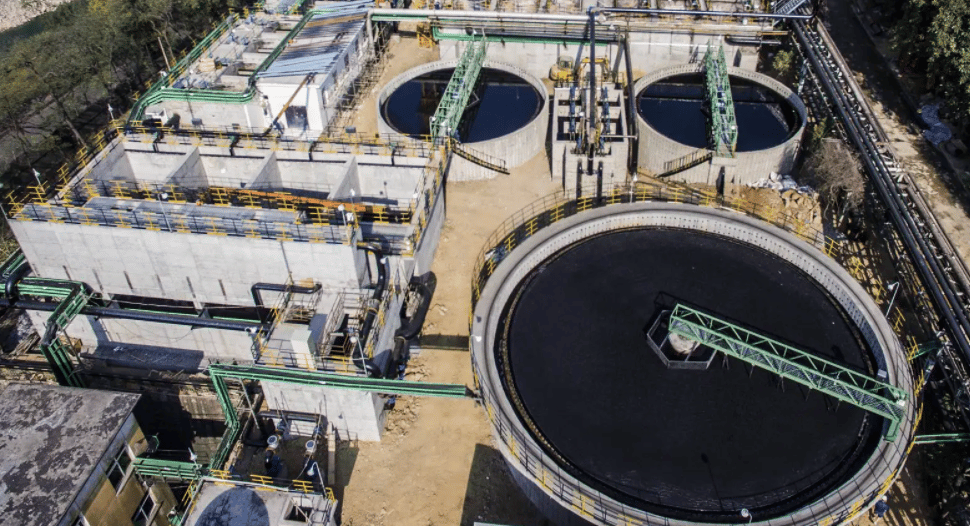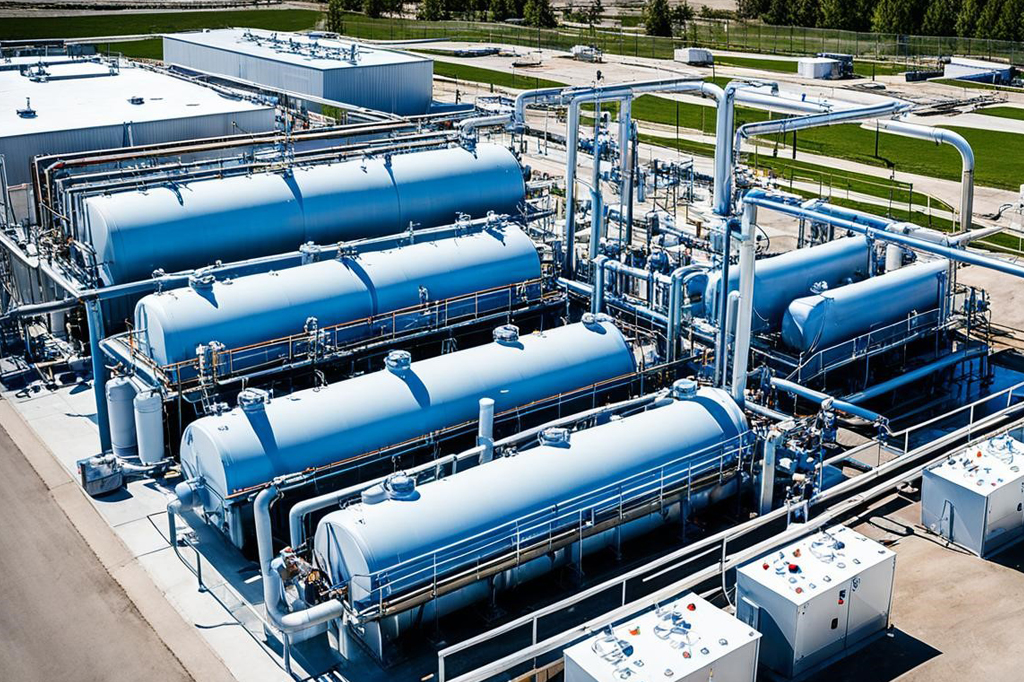Industrial Waste Water Treatment-- Comprehensive Systems for Wastewater Disposal
Industrial Waste Water Treatment-- Comprehensive Systems for Wastewater Disposal
Blog Article
Obstacles and Solutions in Industrial Waste Water Therapy
The therapy of commercial wastewater provides a multifaceted array of challenges, varying from rigid regulative compliance to the intricacies of price monitoring and technological limitations. The irregularity in waste make-up additionally complicates the performance of typical treatment methods, often resulting in risen functional expenditures.
Regulatory Conformity Difficulties
Exactly how can commercial facilities browse the complex landscape of regulatory compliance in wastewater therapy? The governing framework controling wastewater management is diverse, often varying by territory and type of market.
To properly manage these conformity obstacles, facilities must apply robust tracking and reporting systems that make certain real-time data collection and analysis. Regular audits and risk analyses can determine prospective conformity spaces, permitting positive changes in treatment processes. Worker training programs concentrating on governing knowledge and best methods are vital to foster a culture of compliance within the organization.
Additionally, involving with regulatory companies can give useful understandings and clear up unclear regulations. Facilities might also take advantage of speaking with environmental professionals that specialize in wastewater therapy conformity, guaranteeing that they remain informed of advancing policies. By embracing these strategies, industrial facilities can not just fulfill compliance demands yet also enhance their operational performance and ecological stewardship.
Cost and Economic Barriers
Browsing governing conformity in wastewater treatment typically offers substantial financial challenges for industrial facilities. The expenses related to applying necessary treatment innovations, preserving conformity with rigid laws, and managing operational expenses can be daunting. Numerous organizations face high initial capital expenditures for the building or upgrading of wastewater treatment plants, which may strain budgets, especially for medium-sized and small enterprises.
Furthermore, ongoing functional prices, consisting of chemical, upkeep, and labor inputs, contribute to the monetary concern. The unpredictability of fluctuating energy rates and the possible requirement for extra investments to meet evolving laws aggravate these financial pressures. In a lot of cases, the absence of monetary incentives or assistance from government bodies makes it even more tough for organizations to validate investments in advanced therapy systems.
Furthermore, the economic stability of wastewater treatment solutions is usually examined, particularly for sectors with limited profit margins. Consequently, it is important for industrial centers to check out cost-effective approaches, such as embracing innovative funding options, participating in partnerships, and leveraging arising technologies that can aid reduce these financial barriers while making certain compliance with ecological standards.

Technical Limitations
Many technological limitations prevent the efficiency of industrial wastewater therapy procedures. One considerable challenge is the insufficiency of existing treatment technologies to address intricate pollutants. Numerous standard techniques, such as activated sludge and chemical rainfall, fight with the removal of arising contaminants, including microplastics and pharmaceuticals. This constraint commonly results in the discharge of improperly treated water, which can have destructive environmental impacts.
Furthermore, the scalability of therapy technologies presents an obstacle. While some sophisticated approaches, like membrane filtering or innovative oxidation, show pledge in regulated environments, their execution on a bigger scale can be excessively pricey and technically difficult. Upkeep and functional complexities additionally make complex the fostering of these systems, especially for smaller sized sectors with minimal technical experience.
The combination of real-time tracking modern technologies additionally remains inadequate in lots of therapy centers. Without effective monitoring systems, operators can not appropriately assess treatment efficiency or discover prospective failings, bring about irregular effluent top quality. Attending to these technological limitations through research and growth, along with financial investment in ingenious services, is important for enhancing the efficacy of commercial wastewater therapy and making sure regulative compliance.
Irregularity in Waste Structure
In the realm of industrial wastewater therapy, the irregularity in waste composition presents an awesome difficulty. Industries generate wastewater with varied attributes, influenced by factors such as manufacturing processes, raw materials, and functional methods. This heterogeneity makes complex the treatment procedure, as traditional systems frequently struggle to properly deal with the large range of contaminants existing.
For example, wastewater from food processing might include high degrees of raw material, while effluents from chemical manufacturing could consist of heavy steels and hazardous compounds. This variance requires adaptable treatment approaches to make sure compliance with environmental guidelines and shield public health and wellness. Additionally, variations in waste composition can take place in time, affected by changes in manufacturing timetables, maintenance tasks, or the introduction of new items.

Cutting-edge Treatment Solutions
Cutting-edge treatment options are essential for attending to the complexities of industrial wastewater monitoring. Conventional approaches frequently drop brief in efficiently eliminating a vast array of impurities, particularly in facilities with varied effluent streams. Current developments concentrate on incorporating advanced innovations to boost treatment efficiency and sustainability.
One appealing strategy is using sophisticated oxidation procedures (AOPs), which utilize effective oxidants to degrade organic contaminants. AOPs, consisting of photocatalysis and ozonation, can dramatically decrease harmful compounds and boost effluent top quality. Additionally, membrane bioreactor (MBR) technology has acquired traction, integrating organic therapy with membrane layer purification, causing high-quality effluent Industrial Waste Water Treatment and reduced footprint.
Another innovative solution is the implementation of resource recovery systems. Techniques like anaerobic digestion not only deal with wastewater yet additionally generate biogas, which can be used as an eco-friendly power resource. Furthermore, the fostering of expert system and equipment understanding versions can enhance treatment processes by predicting variants in wastewater make-up, consequently improving operational efficiency.
These ingenious remedies not only address governing conformity however likewise advertise environmental sustainability, leading the method for a more resistant and effective industrial community.
Conclusion
In verdict, dealing with the challenges of commercial wastewater treatment needs a multifaceted strategy that integrates governing compliance, price management, and technical advancements. Cutting-edge services, such as innovative oxidation processes and membrane layer bioreactor innovation, deal pathways to improve therapy effectiveness. In addition, official source real-time tracking systems and joint engagement with regulative firms can promote lasting techniques while reducing financial stress. A commitment to constant enhancement in discover this info here therapy methodologies will eventually add to the reliable management of industrial wastewater and environmental management.
The treatment of commercial wastewater offers a complex array of challenges, varying from rigorous governing conformity to the intricacies of cost management and technical constraints. Industrial Waste Water Treatment.Browsing regulative compliance in wastewater treatment frequently presents significant financial obstacles for commercial centers. Attending to these technological restrictions through research and growth, along with financial investment in ingenious remedies, is critical for improving the effectiveness of industrial wastewater therapy and making sure regulative compliance
Wastewater therapy facilities must spend in durable monitoring systems and adaptable therapy innovations qualified of fitting varying influent characteristics.In verdict, dealing with the challenges of commercial wastewater treatment calls for a diverse approach that incorporates regulative conformity, price monitoring, and technological advancements.
Report this page